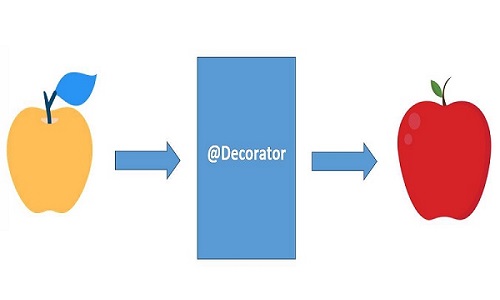decorator를 처음 써보면서 어려웠던 점에 대해 기록하고자 한다. 😢
1. 파일 생성
우선 touch decorator.py 로 파일을 만들어 줍니다.
# decorator.py
import json, jwt, bcrypt
from django.core import exceptions
from django.http import JsonResponse
from django.core.exceptions import ObjectDoesNotExist
from my_settings import SECRET_KEY
from user.models import Account
class login_decorator:
def __init__(self, func):
self.func = func
def __call__(self, request, *args, **kwargs):
try:
access_token = request.headers.get('authorization')
payload = jwt.decode(access_token, SECRET_KEY, algorithms = 'HS256')
user = Account.objects.get(id=payload['account_id'])
request.user = user
return self.func(self, request, *args, **kwargs)
except Account.DoesNotExist:
return JsonResponse({"MESSAGE":"INVALID_USER"}, status=401)decorator를 class로 하는 사람도 있었고 def로만 만드는 사람도 있었다. 나는 이 중에 class 로 만들었다.
def trace(func): # 호출할 함수를 매개변수로 받음
def wrapper(): # 호출할 함수를 감싸는 함수
print(func.__name__, '함수 시작') # __name__으로 함수 이름 출력
func() # 매개변수로 받은 함수를 호출
print(func.__name__, '함수 끝')
return wrapper # wrapper 함수 반환
2. class와 init
기본적으로 decorator의 구조는 이렇다.
데코레이터 login_decorator는 호출할 함수를 매개변수로 받습니다. 그리고 호출할 함수를 만들었습니다.
근데 제가 적은 decorator는 wrapper() 대신에 __init__이 들어가서 당황하신 분이 있을거라 생각합니다.
우선 class에 대해 알 필요가 있습니다. class는 무엇인가를 똑같은 형태로 만들어 낼 수 있는 틀이라고 생각하시면 됩니다.
물론 def로만 함수를 정의해서 만들 수 있지만, 저희는 scrum 방식을 생각해 재사용성이 쉽게 될 수 있도록 해야합니다.
추가적인 기능 추가를 위해서 클래스를 만드는 것이 효율적이기 때문에 class를 사용한 것입니다.
3. init의 역할
호출할 함수를 인스턴스의 초깃값으로 받아야할 때 사용한다.
- 컨스트럭터라고 불리는 초기화를 위한 함수(메소드)
- 인스턴스화를 실시할 때 반드시 처음에 호출되는 특수한 함수
- 오브젝트 생성(인스턴스를 생성)과 관련하여 데이터의 초기를 실시하는 함수
init()은 반드시 첫 번째 인수로 self를 지정해야한다. self에는 인스턴스 자체가 전달되어 있다. 클래스를 생성할 때에 지정한 인수는 초기화 메소드의 2번째부터 작성이 가능해진다.
4. __call__
access_token을 request의 headers에서 authorization을 가져온다. 여기서 'authorization'은 프론트와 상의해서 이름을 가져온다.
request.objects는 objects, headers, body 등 정해져있는 것이 있는데 가져오고 싶을 것을 넣는다.
5. views.py
class FollowView(View):
@login_decorator
def post(self, request):
try:
data = json.loads(request.body)
signed_user = request.user
if Follow.objects.filter(following=signed_user, follower_id=data['follower']).exists():
Follow.objects.filter(following=signed_user, follower_id=data['follower']).delete()
Follow.objects.create(
following = signed_user,
follower_id = data['follower']
)
return JsonResponse({"MESSAGE":"SUCCESS"}, status=201)
except KeyError:
return JsonResponse({"MESSAGE":"KEY_ERROR"}, status=400)
참고자료
decorator 이론 - 코딩도장
https://dojang.io/mod/page/view.php?id=2430
class를 사용하는 이유
https://m.blog.naver.com/PostView.naver?isHttpsRedirect=true&blogId=n2ll_&logNo=221442949008
__init__ 이란?
https://engineer-mole.tistory.com/190

